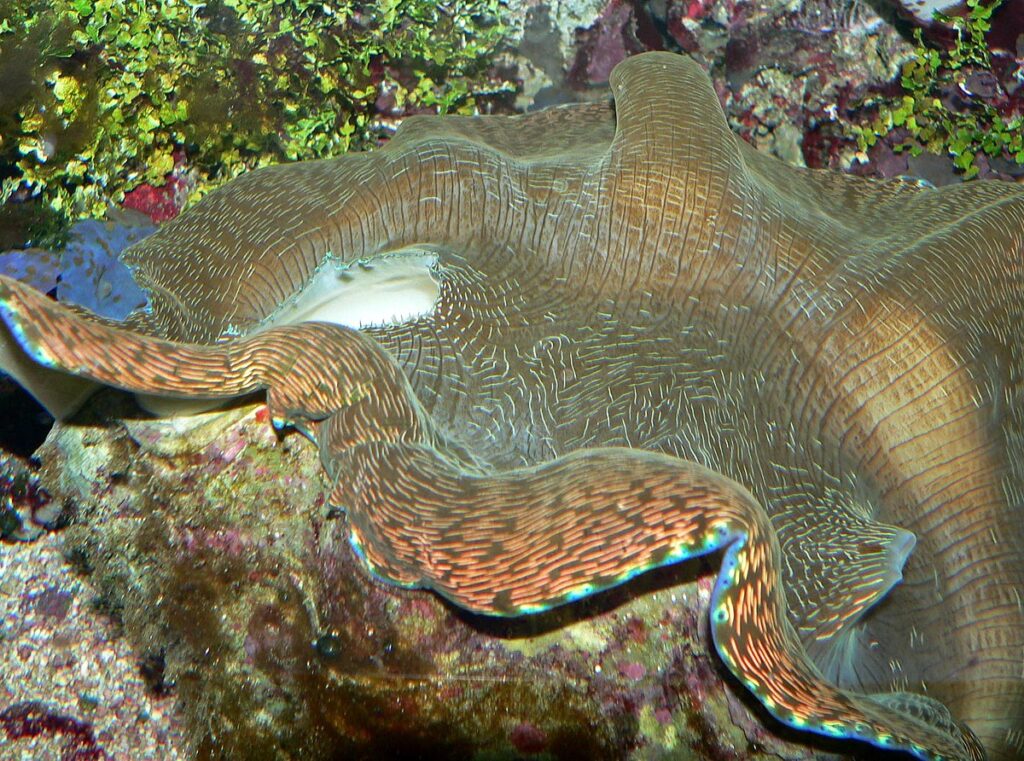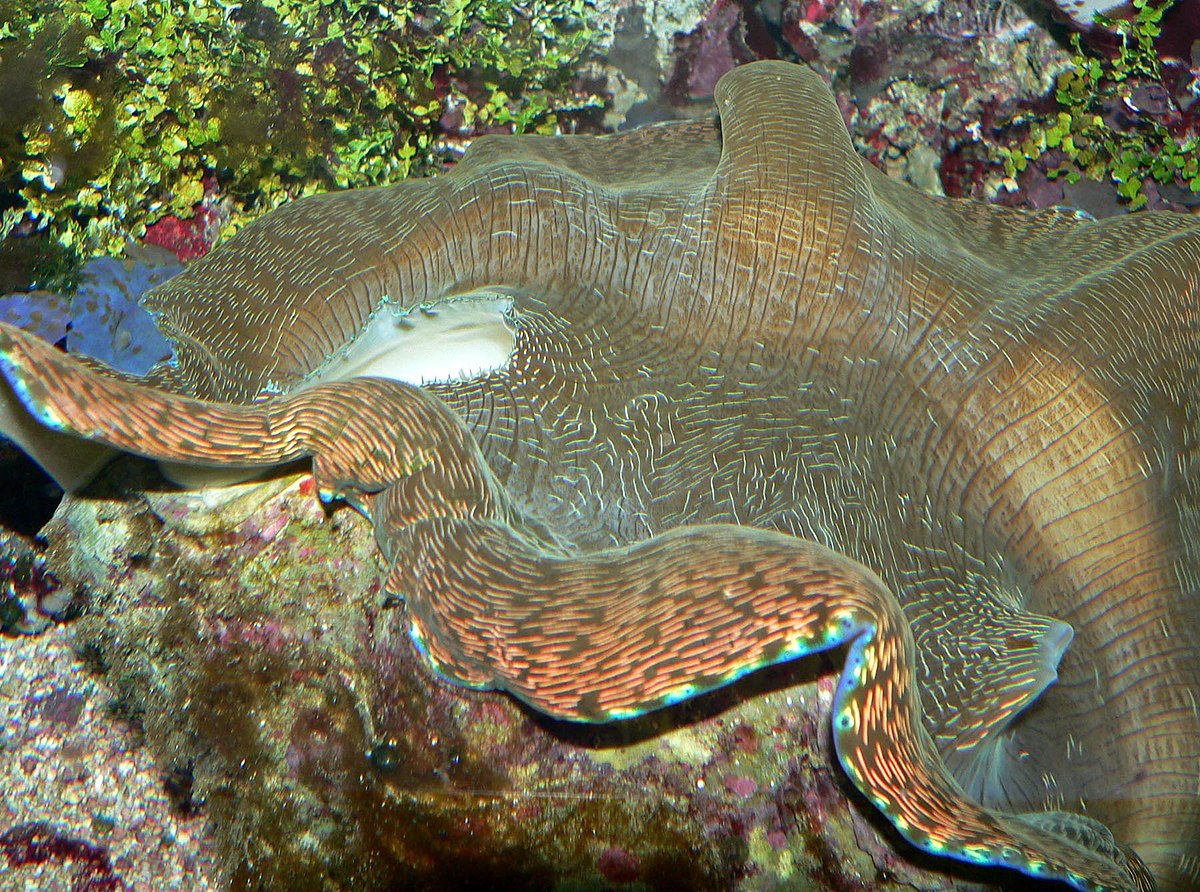ANIMAL: Smooth Giant Clam/Southern Giant Clam/Derasa Clam Tridacna derasa Type of Animal: Cockle Habitat: Outer reefs/reef edges, intertidal coral areas, lagoons, coral outcrops, within Acropora corals, sandy flats, rubble piles, rock faces, found at depths of 1-65 ft Location(s): Indo-West Pacific, C Pacific, & S Pacific Appearance: Very large clam, smooth shell, lack of scutes (scale-like shell protrusions), colorful mantle has wavy stripe or spot pattern, large plain shell, 2nd largest of the giant clams Food/Diet: Make food for themselves in 4 ways-firstly, they have large amounts of symbiotic single-celled dinoflagellate algae (zooxanthellae) in tissues-due to these clams needing moderately lit to well-lit habitats, algae may make too much food for themselves giving extra carbon/glucose to clam. Secondly, zooxanthellae can be eaten by amoebid cells within host clam. Thirdly, they can absorb nutrients from water. Fourthly, they can act as filter-feeders, straining phytoplankton/zooplankton/detritus/algae w/ gills. Status in Wild: Threatened Conservation: Use in aquaculture reducing demand for wild-caught clams Lifestyle: Mostly in colonies of 15-30 clams, though sometimes solitary as well Additional Info: Called: Young: Trocophore Group: Colony/Aggregation/Bed Weight: 90-400 lbs Gestation: 12 hours Life Span: 30-70 years in captivity, 150-250 years in wild Length: Adult: 18-23 in Young: 4 in Main predators are parasitic/predatory snails, fish, sea snakes, sea stars, crabs, lobsters, shrimp, bristleworms, fireworms, octopus, burrowing sponges, clam worms, & anemones. Threatened due to aquarium trade, hunting for food, hunting for shells, medicinal use, habitat degradation/destruction, water pollution, & coastal development. They’re very slow growers after reaching maturity. Reproduction stimulated by lunar cycle, time of day, & presence of other eggs/sperm. They detach byssus (tuft of long tough filaments) as they mature. Most readily available giant clams in aquarium trade. Mantle colors result of crystalline pigment cells. Fun Fact(s): Start life as free-swimming larvae, then developing into new larval stage capable of filter-feeding. Develop feet at 3rd larval stage, allowing it to alternately swim/rest. Become juveniles at around 10 days old, when they acquire zooxanthellae, starting symbiotic relationship. Juveniles become males at 2-3 years old, eventually becoming hermaphroditic once they reach 12 in. Due to being hermaphrodites much of their life, sperm released 1st followed by eggs, avoiding self-fertilization.

